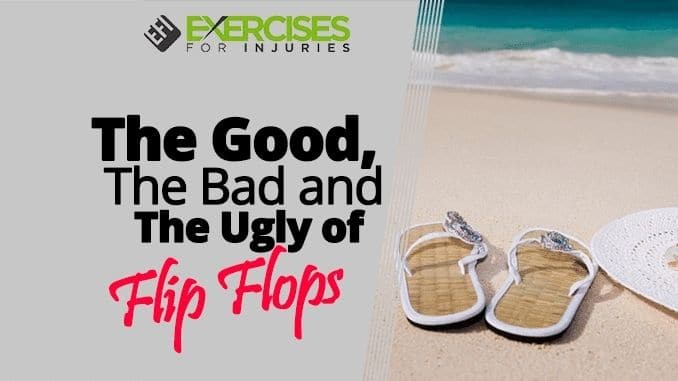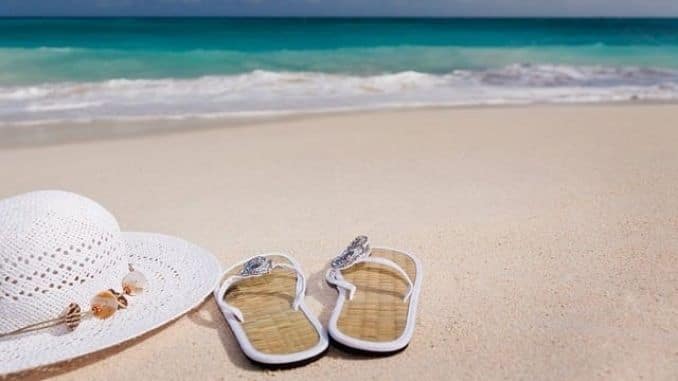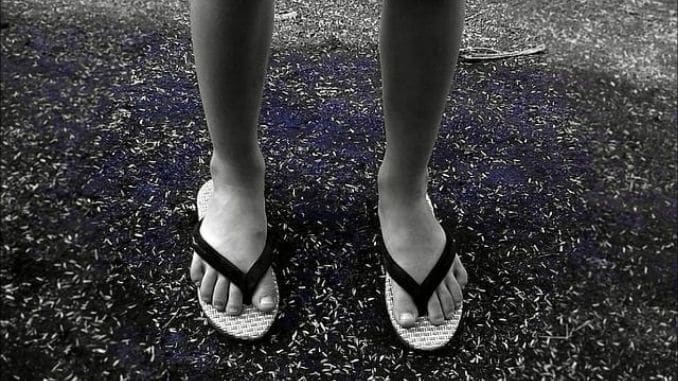
Flip-flops used to be reserved for the beach or the poolside, but things have changed a lot during the past decade. Today, flip-flops can be found almost anywhere in summer: paired with jeans for a night out to the movies or complementing a skirt for a trip to the supermarket. The times when flip-flops were considered too casual are long gone.
Flip-Flops have become so widely accepted as “regular footwear” that an article published on Time magazine’s website revealed that more companies are becoming accepting of employees wearing flip-flops to work. Why? Simply put, Millennials want flexibility at work, and they’re willing to give more of themselves at the office in exchange for comfort and flexibility on several things, including their footwear.
While the acceptance of flip-flops might sound great, there are things to consider ― starting with the health of your feet.

Good News First
Not everything about flip-flops is bad. Wearing flip-flops is better than walking barefoot in public showers, pools or other areas where you might be at risk of contracting athlete’s foot. In summer, flip-flops can also protect the soles of your feet from hot surfaces like cement or stone and small objects or materials that could cause cuts or injury to the soles of your feet.
For many people, the main advantage of wearing flip-flops is how “free” they make your feet feel. They keep skin cool and allow for air ventilation, but they also give your toes a chance to move and even feel the sand and water if you’re heading to the beach.
Minor Risks and Injuries
Because flip-flops leave your feet completely exposed, the risks for injury are high. Exposed feet (especially toes) are at risk of blunt trauma caused by anything from garden equipment to pieces of furniture that “get in the way” while you’re walking around the house. In addition, since your toes have no protection, you’re more likely to end up with torn nail beds or even toe fractures if something heavy falls on your foot.
The tongue in between your toes can cause blisters and so can the constant friction of the rubber against your footpad. With continued use, this can lead to open wounds – a painful annoyance for anybody but a potentially serious problem for people with diabetes because even the smallest cut can become infected quickly.
Add to that the risk of unexpected injuries, such as tripping, falling, twisting your ankle, especially when walking on uneven terrain or running and even getting bit by insects. While some of these can also happen when wearing sandals and other open-toe shoes, the truth is that most people would not wear sandals when hiking or gardening – but they might wear flip-flops.
Things Get Worse
Perhaps the main problem with flip-flops is their lack of support. A typical flip-flop is made of a single flat piece of rubber, which means there’s no arch support whatsoever. Lack of arch support can lead to many issues, including pain and discomfort. It can also cause calluses and muscle cramps. These occur because your body will naturally try to compensate by shifting the weight from your feet to your legs, leading to unnatural positioning that causes pain and fatigue.
In time, wearing shoes that offer no support can also cause plantar fasciitis, a type of inflammation that affects the ligament-like band that stretches from your heel to the ball of the foot.
While several things can cause plantar fasciitis, shoes that don’t offer enough cushioning on hard surfaces often play a role. Since flip-flops are frequently thin and made of a material like rubber, plastic or straw that offers little padding and no shock absorption, the foot hits the pavement harder, leading to inflammation and pain. Over time, this can cause stress fractures and even shin splints.
The problem is worse in people with high arches as the higher angle means more pressure on the heel that, in turn, results in more chances of being in pain or suffering an injury.
How Flip-flops Change You
In addition to injuries and inflammation, experts also believe wearing flip-flops regularly can have lasting consequences. A study conducted by researchers from Auburn University found that people who wear flip-flops walk differently, using a shorter stride and hitting the ground with their heels at an unnatural angle.
The researchers estimated this happens because flip-flop wearers tend to bend their toes to grip the flip-flops to prevent them from falling off. The result? More tension and pain on the legs and ankles.
Even worse, flip-flops can permanently alter your gait (walking style). This often happens in ways that are so subtle, you barely notice them. For example, you might start shifting the weight toward your heel or your toes, or you might change the positioning of your ankles that, in turn, affect the direction of your knees and can add wear and tear to the kneecap. In time, those changes can have a big impact on the health of your feet, legs and ankles.
For example, changes in the way you walk can lead to added stress to the lower back and hips because your body will try to compensate for the change in posture. The connection between lower back pain and arch support is so strong that many doctors will recommend insoles as one of their first steps in dealing with back pain.
Consider Alternatives
Flip-flops are a fine choice for summer days at the beach or by the pool, so if you’re planning a lazy summer excursion, by all means, wear your flip-flops. For everyday summer walking, however, you might want to steer away from them.
One good alternative is to wear good-quality sandals that offer arch support and are padded enough to protect your heels. Alternatively, look for arch support products that you can stick to your flip-flops to provide an added layer of support.
Training shoes or other closed shoes, especially if you add special padded insoles for additional arch support, are another option. Not the most summery choice, maybe, but ideal if you plan on doing a lot of walking or standing.
If you want to discover nature’s secret remedies for healing & fat-burning to feel better, look sexier and enjoy a healthier life, then check out the Best Foods That Rapidly Slim & Heal In 7 Days, here!


